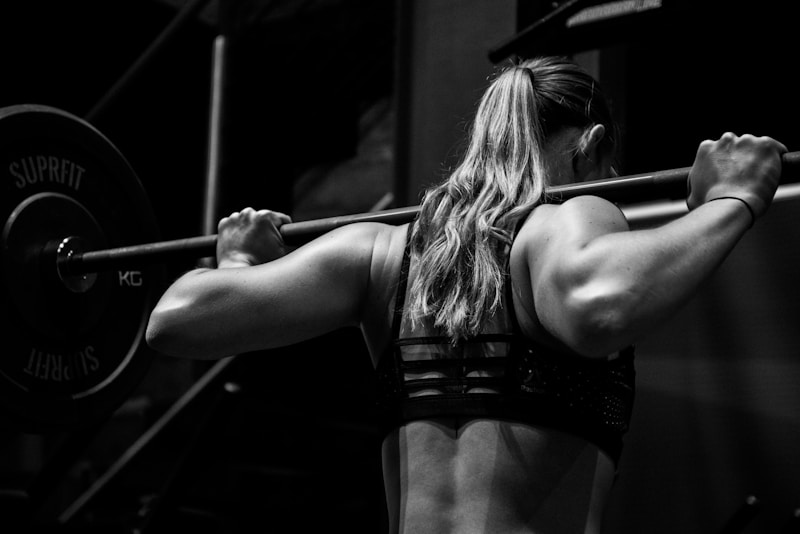The Ultimate Guide to Proper Squat Form
The squat is arguably the single most effective exercise in the gym. It's the "King of Exercises" for a reason: it builds powerful legs, strengthens your core, and triggers a massive hormonal response for overall muscle growth. But with great power comes great responsibility—specifically, the responsibility of maintaining **perfect form**. Improper squatting can lead to stagnation, or worse, serious injury.
Ready to dominate the squat rack? Here is your complete guide to mastering perfect barbell squat form.
I. The Setup: Your Foundation of Strength
The squat starts long before you lift the bar off the rack. A proper setup ensures you are stable, balanced, and ready for the weight.
Bar Placement (The "Shelf")
You have two main options:
- High Bar: The bar rests on top of your traps (the meaty muscle at the base of your neck). This keeps your torso more upright and targets the **quads** more intensely.
- Low Bar: The bar rests lower, across the rear deltoids (the back of your shoulders). This requires leaning forward slightly, engages the **glutes and hamstrings** more, and generally allows you to lift more weight.
Grip: Grip the bar just outside your shoulders. Your grip should be firm, pulling the bar down into your back to create a solid "shelf."
Foot Stance
Start with your feet about shoulder-width apart, and point your toes slightly outward (about 15 to 30 degrees). This angle helps align your hips and allows your knees to track correctly over your feet as you descend.
II. The Descent: The Critical Phase
The descent (or eccentric phase) is where most people make mistakes. Control and balance are key.
Initiate the Movement
Don't think about "squatting down"; think about **"sitting back"** between your legs. The movement should start with a slight, simultaneous bend at the hips and knees. Avoid moving the knees forward too soon.
Maintain the Back Angle
Throughout the entire movement, keep your chest high and your back straight. Imagine trying to show the logo on your shirt to the wall in front of you. Before you descend, take a deep breath into your belly and **brace your core** as if preparing for a punch. This stabilizes your spine.
Hitting Depth
The goal is to descend until your **hip crease is below the top of your knee cap** (parallel or slightly below). This is known as "breaking parallel."
Knee Tracking: Your knees must track directly in line with your toes. Never let your knees cave inward! Actively push them out throughout the movement.
III. The Ascent: Drive and Finish
The ascent (or concentric phase) is your power move.
Drive Up
Imagine pushing your feet through the floor. The force should come from your **glutes and quads**, driving your body upward. Push up powerfully, but maintain control—avoid bouncing out of the bottom position.
Finish Strong
Your hips and shoulders should rise at the same rate. This maintains your back angle and keeps the lift efficient. At the top, finish with a full hip and knee extension, squeezing your glutes slightly. Do not over-extend or lean back—keep your core tight.
Key Cues to Remember
Focusing on these simple commands can instantly improve your form:
- "Sit Back": Initiates the hip hinge and keeps pressure off the knees.
- "Brace Hard": Stabilizes the spine and maximizes power transfer.
- "Knees Out": Protects the knee joint and engages the glutes and hips.
- "Chest Up": Prevents the torso from collapsing forward.
Common Mistakes to Avoid
- Knees Caving In: This puts dangerous stress on the knees. Fix it by actively thinking "knees out!"
- Lifting Heels: If your heels lift, your ankles lack mobility, or you are leaning too far forward. Fix it by wearing flat shoes or working on ankle mobility.
- Bouncing: Using momentum at the bottom can damage your joints. Fix it by lowering slowly and exploding up with control.
Mastering the squat is a journey. Start light, focus intensely on these steps, and only increase the weight when your form is consistent and comfortable. Happy squatting!
